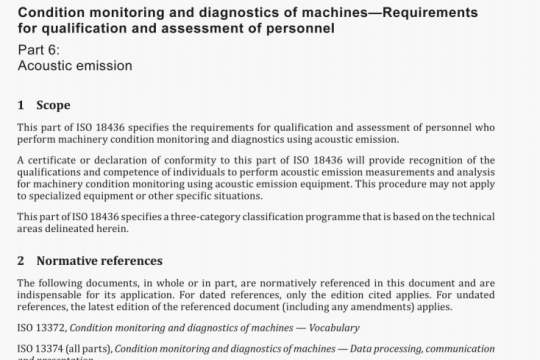BS EN ISO 4674-1:2016 pdf free
BS EN ISO 4674-1:2016 pdf free.Rubber-or plastics-coated fabrics一Determination of tear resistance
Adjust the test machine to give a rate of jaw traverse of (100±10) mm/min, and select the appropriate load capacity range. Engage and zero the autographic recorder. Adjust the jaw separation to 100 mm.
Clamp the tongue of the test piece centrally and symmetrically in the jaw so that the line BC is just visible, as ilustrated in Figure 3. Clamp the legs of the test piece symmetrically in the other jaw of the machine so that the lines AB and CD are just visible and the legs of the test piece are parallel to the tearing force.
Set the test machine in motion at the specified rate of traverse and stop the test after 60 mm of the test piece has been torn, i.e. at the termination line.
Observe if the tear does not proceed along the direction of force and whether any threads slip out from the fabric rather than being torn. The test is to be considered correct if no slippage occurs in the jaws,no delamination takes place between coating and base fabric during the test and the tear proceeded and was completed along the direction of application of the force. Other results shall be rejected unless otherwise they are judged to be useful information at the users’ discretion and to be recorded as an informative value in the test report.
When testing on wet test pieces is required, remove the test piece from the water (in accordance with the last paragraph in 7.1), press it tightly between two sheets of blotting paper and immediately carry out the test as described above.
If three or more test pieces have to be rejected, consider the method as unsuitable.
In this case, and if the test has been performed with normal test pieces, the tear resistance may be assessed either by using another method, e.g. ISO 4674-2, or by re-testing by the present method using large test pieces as described in Annex B.BS EN ISO 4674-1 pdf free download.




